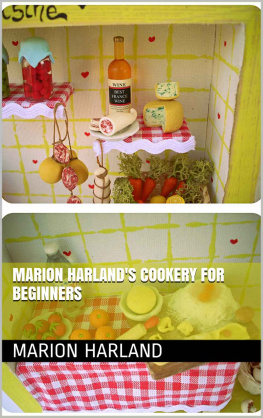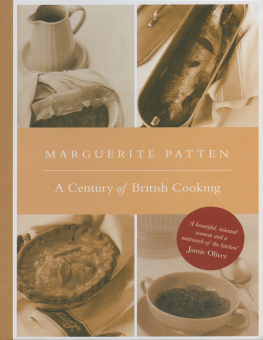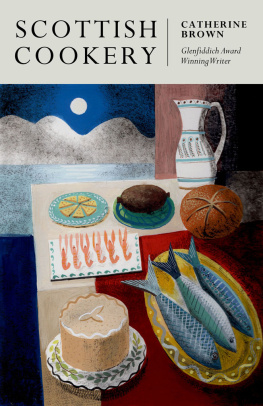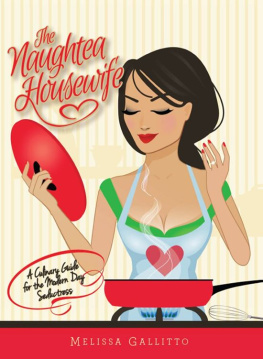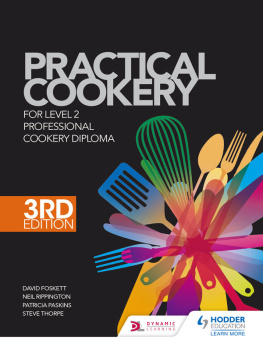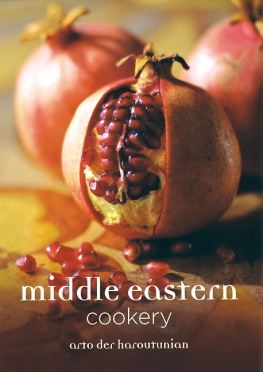Harland - Marion Harlands Cookery for Beginners
Here you can read online Harland - Marion Harlands Cookery for Beginners full text of the book (entire story) in english for free. Download pdf and epub, get meaning, cover and reviews about this ebook. year: 2015, genre: Home and family. Description of the work, (preface) as well as reviews are available. Best literature library LitArk.com created for fans of good reading and offers a wide selection of genres:
Romance novel
Science fiction
Adventure
Detective
Science
History
Home and family
Prose
Art
Politics
Computer
Non-fiction
Religion
Business
Children
Humor
Choose a favorite category and find really read worthwhile books. Enjoy immersion in the world of imagination, feel the emotions of the characters or learn something new for yourself, make an fascinating discovery.
- Book:Marion Harlands Cookery for Beginners
- Author:
- Genre:
- Year:2015
- Rating:3 / 5
- Favourites:Add to favourites
- Your mark:
- 60
- 1
- 2
- 3
- 4
- 5
Marion Harlands Cookery for Beginners: summary, description and annotation
We offer to read an annotation, description, summary or preface (depends on what the author of the book "Marion Harlands Cookery for Beginners" wrote himself). If you haven't found the necessary information about the book — write in the comments, we will try to find it.
Marion Harlands Cookery for Beginners — read online for free the complete book (whole text) full work
Below is the text of the book, divided by pages. System saving the place of the last page read, allows you to conveniently read the book "Marion Harlands Cookery for Beginners" online for free, without having to search again every time where you left off. Put a bookmark, and you can go to the page where you finished reading at any time.
Font size:
Interval:
Bookmark:
HOME-MADE YEAST AND THE FIRST LOAF.
THE question is often asked, What is the most important branch of culinary knowledge? What the chief requisite in supplying the table well and healthfully?
The experienced housewife cannot hesitate as to the reply.
Beyond doubt, the ability to make good bread. No one need rise hungry from a table on which is plenty of light, sweet bread, white or brown, and good butter. For the latter item many of us are dependent upon market and grocery. It is hardly just to hold the cook responsible for imperfections in this regard when she has bought the best articles these supply. She is culpable if she fails to see that her board furnishes three times a day a bountiful allowance of what I hope none of my friends in council will ever call healthy bread. The eater may be made or kept healthy by the consumption of nutritious, wholesome, healthful or healthsome food; but the most careful philologists do not speak of edibles as subject to such diseases as may afflict living creatures.
While it is always wise to use none except the best flour in bread-making, it is true that skilful management of an inferior brand will often produce better loaves and biscuits than careless treatment of fine family flour. I say this that none may be discouraged. So far as my observation and experience extend, nothing can remedy the disadvantage of indifferent yeast.
Let me earnestly advise, therefore, as the foundation of successful baking, the manufacture of
HOME-MADE YEAST.
Four large mealy potatoes, peeled.
Two quarts of cold water.
One teacupful of loose, dry hops, or , half a cake of the pressed hops put up by the Shakers and sold by druggists.
Two tablespoonfuls of white sugar.
Four tablespoonfuls of flour.
Half a cupful lively yeast, or a yeast-cake dissolved in a little warm water.
Put water, potatoes, and the hops tied up in a bit of coarse muslin, over the fire in a clean pot or kettle. Boil until the potatoes break apart when a fork is stuck into them. Unless they are very old or very new, this should be half an hour after the boiling begins. Take out the potatoes, leaving water and hops on the range where they will boil slowly. Mash the potatoes smooth in a wooden tray or large crockery bowl, with a wooden spoon, and work in the sugar. When these are well-mixed wet the paste with three tablespoonfuls of the boiling hop-tea, then stir in a tablespoonful of flour. Do this four times, beating and stirring to get rid of lumps. When the flour is all in, add, a little at a time, the rest of the hop-tea, squeezing the bag hard to get every drop. Throw the boiled hops away, and wash the cloth or bag well before putting it aside for the next yeast-making.
Strain the thick, grayish liquid through a colander into a bowl and let it get almost but not quite cold before you stir in the half cupful of made yeast that is to raise it. Set aside out of the dust and wind, put a sieve or throw a bit of mosquito netting over it, and leave it to work. It is a good plan to set the bowl in a large pan or dish to catch what may run over the sides. When the yeast ceases to sing or hiss, and the bubbles no longer rise and break on the surface, the fermentation is complete. Four or five hours in July, seven in January, usually bring this to pass. Pour the yeast into glass fruit-jars with close covers, or stone-jars fitted with corks, or common bottles, tying the corks down with twine. Keep in a cool , dark place, and do not open except to draw off the quantity needed for a baking. In the refrigerator it will keep good for a month. Shake up the bottle before pouring out what you want into a cup.
The creamy, foamy product thus obtained is quite another thing from the dark, bitter stuff pedled from one kitchen door to another as brewers or bakers yeast, unfit for use unless strained, and then too frequently unprofitable because stale and flat.
THE FIRST LOAF.
One quart and a cupful of sifted flour (a half pint cup)
One even teaspoonful dry salt.
Two full cups of blood-warm water.
Five tablespoonfuls of yeast (good ones).
Sift the flour and salt together into a wooden or stoneware bowl. Make a hole in the middle and pour in the yeast, then a cupful of the water. With clean hands begin to work down the flour into the liquid, and as it stiffens add the rest of the water. When the dough is all wet dust your fingers with dry flour, and rub off the paste into the bowl. Scrape the sides of this, dust your fingers again, and make all the dough into a lump or ball. Dredge your pastry or bread-board well with flour, put the dough upon it and sift flour lightly over it. Ask your mother or some experienced person whether or not it is of the right consistency. There is so much difference in various brands of flour that only practice can teach one when the dough is just right. Do not get it too stiff. Add flour very cautiously even should it stick to your fingers. Knead the bread for fifteen minutesnot so fast as to tire yourself out of breath, but steadily and hard, working it away from you all the time, turning the ball over and around so as to reach every part of the mass. It should leave the board without stickiness at the end of this time, be smooth, firm, and elastic. Strike it hard with a tight fist, and if the dent thus made fills up at once, you have kneaded it sufficiently.
Sprinkle your bread-bowl with flour, put the dough in the bottom, sift flour lightly over the top, cover with a clean thick cloth and set, in cold weather, in a moderately warm place, in summer, out of the draught, but away from the fire and sun. It should be light in four hours in warm weather, in six in winter. If you wish to have it for breakfast, set at bedtime, and get up early to work it over for the second rising.
This must not be done until the dough has swollen immensely, and cracked over the top like crazed china. Flour the board and knead as before, now for ten minutes. Grease two brick or round bread-pans well with sweet lard or butter, make out the dough in two oblong or round loaves, and pat these down in the pans to fit the corners. Prick the tops with a sharp fork, cover with a clean cloth, and let them stand for an hour before putting them into the oven.
The oven must be steady, but not too hot. You should be able to hold your bare arm in it while you count twenty regularly. Should the bread rise very fast at first, lay stout paper over the top to prevent it from browning before the heart is done. Do not allow the stove or range to be filled with fresh coal or wood while your bread is in the oven, or it will be slack-baked. Should you need to increase the heat, put in a stick or two of wood to get up a brisk blaze. Do not open the oven for ten or twelve minutes after the bread goes in, and very seldom afterward. A peep should suffice to see how it is getting on. If the loaf rises higher at the back or at one side than in front or on the other side, turn the tin quickly, and do not jar it, or it will fall into heavy streaks. If the oven is right, your loaves should be done in about thirty-five minutes.
Set the loaves up on the edge of one end, leaning against the wall or an upright board, that the air may dry the bottom, throw a dry cloth over them and leave them to cool. When quite cold wrap in a clean thick cloth and keep in a tin box or stone crock.
In this, as in other first attempts, let me warn you against being disheartened by failure, partial or total. It would be far more strange were you to accomplish perfection in one, or in half a dozen lessons, than if your early efforts should be only moderately successful.
See that your yeast is lively and not sour, the flour good and dry, then follow directions implicitly, and I think I can engage that the result will not mortify you.
BREAD SPONGE AND BREAKFAST BREADS.
Font size:
Interval:
Bookmark:
Similar books «Marion Harlands Cookery for Beginners»
Look at similar books to Marion Harlands Cookery for Beginners. We have selected literature similar in name and meaning in the hope of providing readers with more options to find new, interesting, not yet read works.
Discussion, reviews of the book Marion Harlands Cookery for Beginners and just readers' own opinions. Leave your comments, write what you think about the work, its meaning or the main characters. Specify what exactly you liked and what you didn't like, and why you think so.

